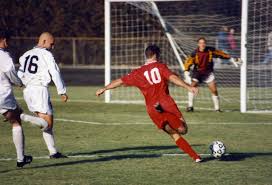In a recent legal case involving a professional soccer player and a workers' compensation claim, the District of Columbia Court of Appeals revisited a long-standing issue surrounding a knee injury. This case, Little v. District of Columbia Department of Employment Services, sheds light on how a mix-up in understanding the injury claim led to a protracted legal battle and a reconsideration of the case by the court. The legal dispute traces back to injuries the player sustained in 2001 or 2002 and how those injuries were interpreted and connected to subsequent medical issues she faced years later.
Background of the Case
The soccer player, whose career spanned many years, originally injured her left knee while playing professionally in either 2001 or 2002. This injury led to significant physical issues over time, and by 2015, she began to experience problems with her right knee, which she attributed to her altered walking pattern, or gait, that resulted from compensating for the earlier left knee injury. According to the player, the years of walking differently to manage the left knee pain caused deterioration in her right knee, which eventually required two surgeries.
The player filed a workers' compensation claim for her right knee, arguing that her disability was a direct consequence of the original left knee injury. However, her case hit a major roadblock due to confusion surrounding the nature of her claim.
Initial Denial of the Claim
When the case was brought before an Administrative Law Judge (ALJ), the judge denied the player's workers' compensation claim. The denial was based on two key points:
- Prior Right Knee Surgeries: The ALJ pointed out that the player had undergone right knee surgeries before her left knee injury, casting doubt on her assertion that the right knee disability was a result of the left knee injury.
- Doubt Regarding the Left Knee Injury: The ALJ also raised doubts about whether the player’s right knee disability was truly work-related, suggesting that her claims lacked credibility.
Following this decision, the Compensation Review Board (CRB) upheld the ALJ’s denial, leading the player to appeal the ruling to the District of Columbia Court of Appeals, the highest court in the district.
The Court of Appeals’ Ruling
The District of Columbia Court of Appeals reviewed the case and ultimately vacated the CRB's decision, remanding the case for further consideration. In its ruling, the court noted that both the ALJ and the CRB had fundamentally misunderstood the nature of the player's claim.
The court explained that the player's argument was not that she suffered a work-related injury to her right knee on the same day as the left knee injury occurred, as the lower bodies seemed to believe. Rather, the player's claim was that the left knee injury, sustained in 2001 or 2002, gradually led to the deterioration of her right knee by 2015. This distinction had not been adequately assessed by the ALJ or the CRB.
The court emphasized that both the ALJ and CRB were misled by the player's supposed lack of credibility, which stemmed from a misunderstanding of her testimony. The court pointed out that the player's testimony had been unfairly interpreted as questioning whether she suffered a work-related injury to her right knee on the date of the left knee injury—a claim she never actually made.
Burden of Proof and Medical Evidence
In reviewing the evidence, the court highlighted that the ALJ and CRB had both acknowledged that the player presented sufficient evidence of a work-related disability in her right knee. This evidence was enough to invoke the "presumption of compensability," which required the employer to provide "specific and comprehensive" evidence to refute the claim.
Crucially, the player had undergone an independent medical examination (IME), which concluded that her right knee condition was "causally related" to the left knee injury with a "reasonable degree of medical certainty." This evidence supported the player’s case, and it was up to the employer to present convincing evidence to rebut this presumption.
However, the court found that the ALJ and CRB had incorrectly relied on a letter from the player’s doctor, which mentioned that her right knee pain had come on acutely and had been treated in an emergency room. The court reasoned that this letter was a "stray statement" and was inconsistent with the player's medical records, which clearly showed that the emergency room visit had been related to her left knee, not the right knee.
Conclusion and Takeaway
The court’s decision in Little v. District of Columbia Department of Employment Services underscores the importance of accurately understanding the details of a workers' compensation claim. In this case, a misunderstanding of the player's claim led to a denial that was eventually vacated. The ruling reaffirms that the player's right knee problems could be traced back to the left knee injury she sustained during her professional soccer career.
While the court did not conclusively decide in favor of the player, it made clear that the evidence presented warranted further examination, and the case was remanded for additional proceedings. This decision serves as a reminder that even small errors in the interpretation of testimony and medical evidence can have significant implications for the outcome of workers' compensation cases.
The broader implication of this case is the necessity for clarity in workers' compensation claims, especially when injuries develop over long periods and involve secondary conditions caused by compensating for earlier injuries. It also highlights the need for careful judicial analysis when presumption of compensability is triggered by medical evidence, ensuring that all relevant facts are taken into account.




